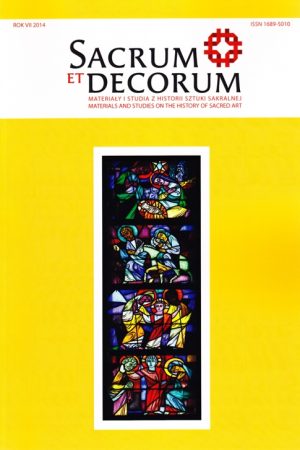“One by one we look at them”. The experience of an encounter with a religious image in poems by Jakub Ekier
Keywords:
Jakub Ekier, typology of ekphrasis, religious poetry, visual arts, the Isenheim altarAbstract
The poems by Jakub Ekier constitute a case that is quite rare in contemporary poetry: the case when poems referring to religious paintings build, via those paintings, their own way to the truths of faith and the truths about faith. The analysed texts indicate the difference between the painting material, which makes use of light and silence, and the poetic element; at the same time it is an act of looking at an old master religious painting that becomes an inspiration for the effort to express in language the spiritual experience of modern man. The poems analysed here, and dedicated to works of religious art, do not quite fit the typologies of ekphrasis that are the most commonly applied in Polish literary studies. This is due to the multiple levels deliberately created by Ekier in his poetry, although to some extent such is probably the specificity of a larger group of ekphrases concerning religious paintings. Poetic texts referring to such works of art touch both the substance of the representations (the biblical history) and the specificity of works of visual art, capable of expressing the biblical events using their own, specific means. In the presence of both of those spheres, language – particularly the language of modernity, increasingly diverging from the sacred – is to a certain extent helpless. By means of “ineffective reference” whose object is an old master religious painting, a poem is, however, able to say something important both about the modern reading of old masterpieces and about modern religious experience, for which the common denominators are the hermeneutical conviction of an inalienable character of one’s own cognitive horizon and constant attempts to cross it.Downloads
Downloads
Published
How to Cite
Issue
Section
License
Copyright (c) 2014 Sacrum et Decorum

This work is licensed under a Creative Commons Attribution-NonCommercial-NoDerivatives 4.0 International License.
In line with the Open Access policy, authors retain full copyright to their articles – without restrictions.
Authors can deposit their articles in a repository of their choice.


